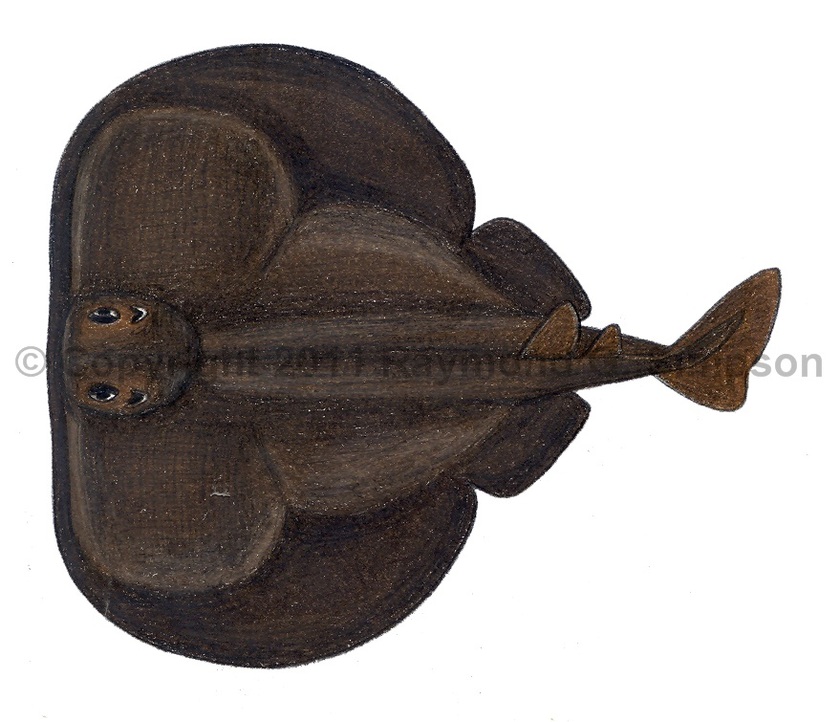
Common Name
Argentine Torpedo
Year Described
Lahille, 1926
Identification
A large species of electric ray. Disk almost round and thickened in cross-section. Snout not usually projecting. Eyes close to anterior margin. Eyes small and close together. Spiracles small and lacking papillae. Mouth with ~35-37 rows of teeth (more in adults). Electric organs visible as large lumps in the anterior portion of each pectoral fin. Tail short and stumpy. Pelvic fins rounded and project beyond rear disk to level of first dorsal fin. There are two dorsal fins positioned very near each other: the first being much larger than the second. Caudal fin truncate to slightly emarginate with rounded upper and lower lobes. Low skin folds on side of tail. Skin entirely smooth. Claspers in males thick and stumpy; reaching caudal fin base.
Color
Dorsum dark gray, blackish, or brown with no markings. Ventrum creamy white.
Size
Maximum size to 120cm TL.
Habitat
A bottom living species. Can deliver a strong electric shock.
Range
Southern Brazil to Argentina
References
Last, P.R., White, W.T., Carvalho, M.R. de, Séret, B., Stehmann, M.F.W & Naylor, G.J.P (Eds.). 2016. Rays of the World. CSIRO Publishing, Melbourne.
Other Notes
More research needs to be done to determine the relationship between this species and the northwestern Atlantic Tetronarce occidentalis, the eastern Atlantic T. nobiliana, the southeastern Atlantic T. cowleyi, and the southeastern Pacific T. tremens.